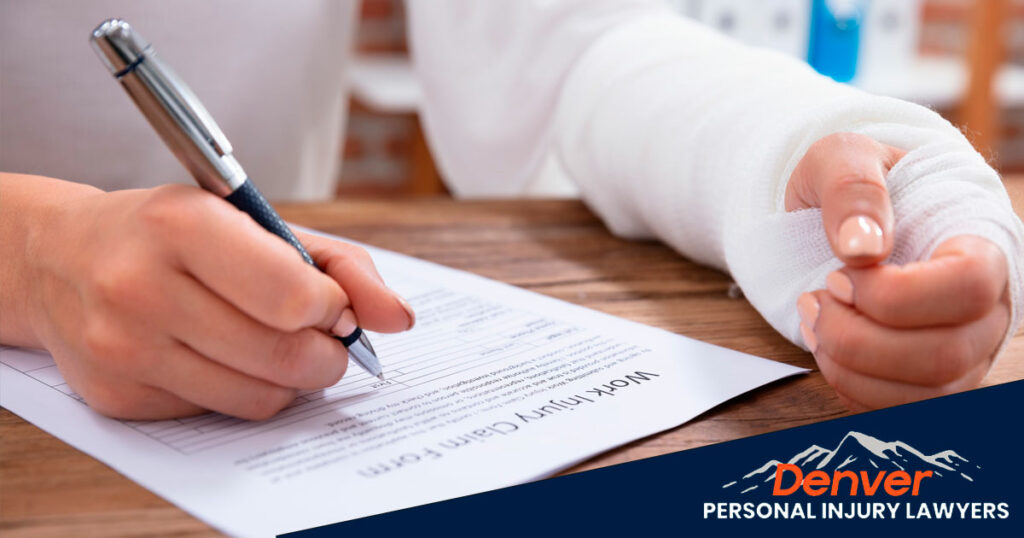A personal injury case or claim is a legal dispute that emerges after someone suffers harm from an accident or injury. Often someone else is legally responsible for the victim’s injuries and damages.
While it may be true that mishaps occur every day, that doesn’t take away from the pain and confusion that can result from an accident. If you choose to take legal action following an accident or injury, you may have questions. You might be wondering if you should file a personal injury lawsuit and what you can expect if you choose to do so.
In this article, we’ll explore how fault is established in an injury case, how to figure out what your claim might be worth, and the best course of action to protect your legal rights after you’ve suffered injuries from an accident.
Table of Contents
ToggleWhat Is Considered a Claim for Personal Injury?
Personal injury rules can apply to a variety of different situations. Here are some examples:
- Accidents: When someone acts negligently, and their carelessness has caused you harm, this would be a personal injury case. Examples of personal injury accidents include car, biking, pedestrian, rideshare, truck, and motorcycle accidents.
- Intentional Acts: If someone’s intentional conduct caused you harm, this could also be a situation where personal injury laws apply.
- Defective products: If a product is faulty and causes unreasonable danger to a consumer, any victims harmed by the product might be able to file a product liability lawsuit.
The Basics of Personal Injury Claims
Personal injury cases are legal disputes resulting from one person suffering injuries and losses from another person’s negligence. The responsible person’s insurance will usually pay the victim. Expenses covered could include medical bills, pain, suffering, and extended or ongoing medical treatment.
A personal injury case will become formalized in a court proceeding, where you will have an attorney representing you. The purpose of a court session is to reach a court ruling that deems the at-fault party legally responsible for the accident. Often, involved parties can resolve a dispute through an informal settlement before a lawsuit. Here are the two likely outcomes with most personal injury cases:
- The formal lawsuit – (This is different from a criminal case, which the government initiates) The act of bringing a claim against another party is known as “filing a lawsuit.” A legal personal injury case starts with a private individual, the plaintiff, filing a civil complaint against another person or defendant. The defendant can be a business, corporation, government agency, or defendant. The individual filing a claim alleges that the at-fault party’s careless or irresponsible actions caused them injury or harm. The plaintiff will need proof that the other party was negligent and their injuries resulted from the negligence.
- Informal settlement – Many disputes never actually go to court and are resolved through informal settlements. Informal settlements involve the plaintiff and defendant, insurance companies, and attorneys. There will usually be a settlement through negotiating. After that, there is a written agreement to forgo any further action, such as a lawsuit. The most common outcome is an agreement on a certain amount of money to be paid to the plaintiff.
What is a Statute of Limitations?
Personal injury claims have a time limit for a plaintiff to file them. A person’s time to file a lawsuit is called the statute of limitations. The time limit for personal injury claims in Colorado is two years. So, you will have two years from the date of accident or injury to file your claim and find an experienced attorney who can handle your case. Once a lawsuit is initiated, there is no time limit to present the case.
What Laws Apply to Personal Injury Cases?
Personal injury laws date back to old “common law rules.” That means that rather than legislation passed through bills, the rules have been made by judges.
A judge will hear a case and decide on a ruling. That judge’s decision then becomes a precedent for lower courts. The lower courts have to apply what the higher court judge ruled. This binding precedent creates what is known as “common law.”
Common law differs from state to state. For example, Colorado has its specific laws governing personal injury claims. Colorado, like many states, draws guidance for personal injury laws from something called the Restatement of Torts, which is sort of like a guidebook explaining the rules.
Common law is not the only source of personal injury law – there is also some legislature that governs personal injury issues. The statute of limitation is an example of the legislation for personal injury claims. The statute of limitation for personal injury claims in Colorado is two years.
What Is the Personal Injury Claims Process?
Since each personal injury case is unique, no two cases will follow the exact same course. There are, however, some standard procedures that most personal injury cases will follow. Here is an outline of a typical personal injury claim process:
- An accident or other incident occurs whereby the defendant injures the plaintiff.
- The plaintiff determines that the defendant breached a legal duty. One example of this might be a driver who has a responsibility to operate their vehicle with a certain level of care. Failure to do so could result in a car accident that causes injuries to the victim. Let’s say a driver is drunk or distracted driving. In that case, the driver has breached their legal duty to drive with reasonable care and would be found liable for an accident that resulted from their negligence.
- Settlement negotiations: if it becomes clear to all parties involved that the defendant breached a legal duty, they may wish to settle outside of court. This involves making compensation offers to the person who sustained injuries. In turn, the injured person will agree not to file a lawsuit for the damages.
If a plaintiff agrees to the settlement, the case is closed. However, if both parties cannot reach a settlement agreement through negotiation, the plaintiff may proceed to court and file a personal injury lawsuit. Even if the victim decides to move forward with a lawsuit, settlement negotiations can still be reached at any time. As long as it is reached before handing the case over to a jury for a verdict, a settlement agreement can be a valid option to resolve the dispute.
If you are thinking about filing a personal injury case after an accident, your best first step is to discuss your situation with an experienced personal injury attorney.
Get Professional Help With Your Colorado Personal Injury Lawsuit
With any personal injury case, it’s imperative to have a detailed understanding of the facts and the relevant laws. If an accident that someone else is liable for has left you injured or impacted your life negatively, you may be entitled to compensation. Contact a skilled Colorado personal injury attorney today for a consultation.
















